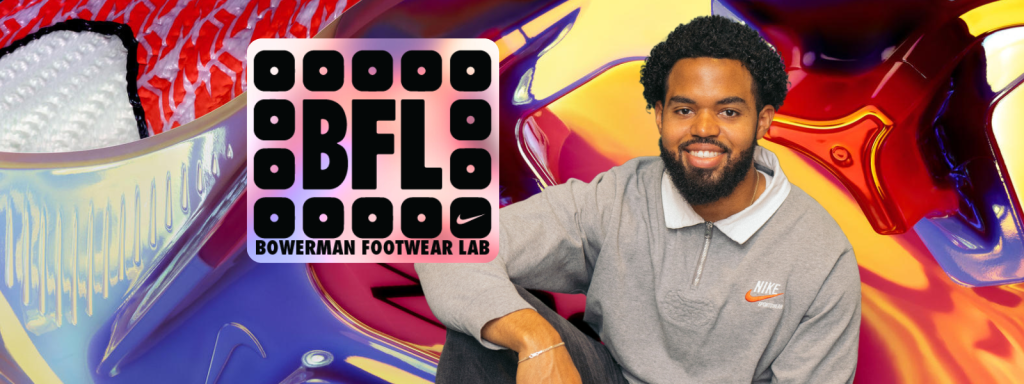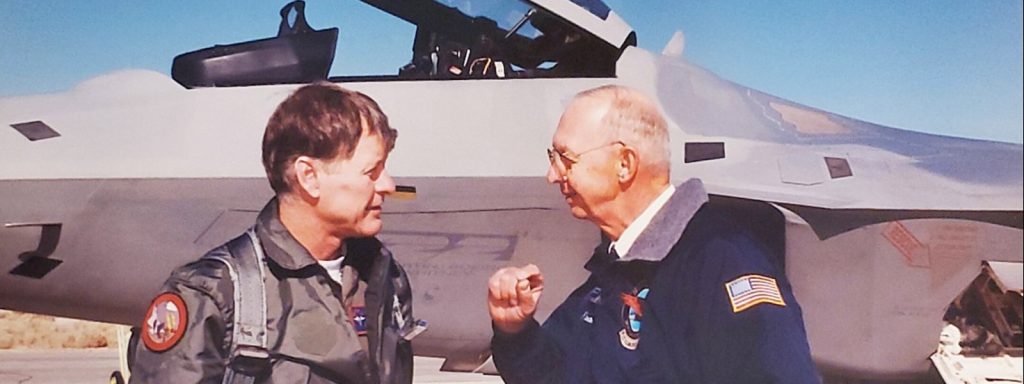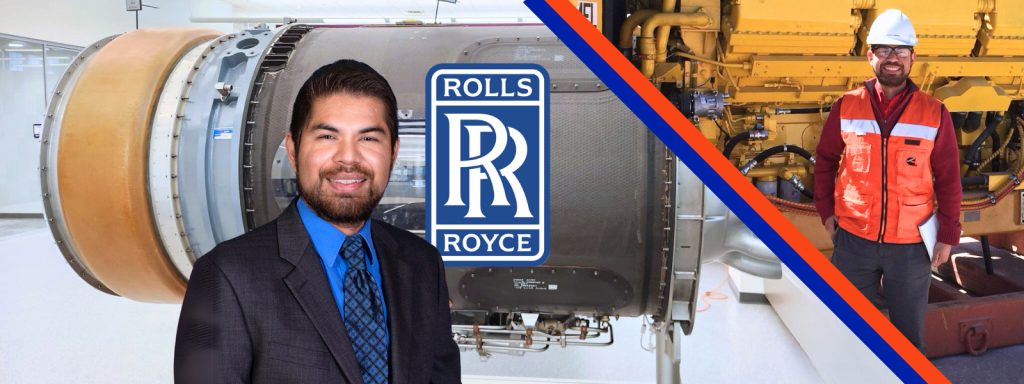Outstanding Alumni News
UF alumni have made their mark in varied industries and have inspired future generations of engineers. Read on to discover the stories of Logan Hickox, Frank Gillette, and Alberth Franco.
Logan Hickox: From Robotics to Revolutionizing Footwear at Nike

What do robotics and basketball shoes have in common? For UF mechanical and aerospace engineering (MAE) alum Logan Hickox, the answer is simple: engineering. Hickox, now a mechanical engineer at Nike’s Bowerman Footwear Lab, is at the forefront of blending cutting-edge technology with athletic performance. His journey, which began at P.K. Yonge and the University of Florida, is a testament to the transformative power of engineering education and the importance of exploring diverse paths.
In his three years at Nike, Logan has worked on projects that bring together his passion for engineering and athletics. From collaborating with sports icons to designing performance-enhancing footwear, his work is a full-circle moment, blending his background as an athlete with his expertise as an engineer. “It’s incredible to see how engineering can impact people’s lives in ways you wouldn’t expect,” Logan shared. His journey to this role, however, began long before Nike, starting with his formative years at the University of Florida and P.K. Yonge.
Logan’s engineering journey began in high school at P.K. Yonge, where he joined the robotics team through the For Inspiration and Recognition of Science and Technology (FIRST Robotics) program. What began as a way to fill time after an injury sidelined his athletic pursuits quickly grew into a passion for hands-on problem-solving. His dedication earned him the prestigious FIRST Dean’s List Award in 2015, solidifying his decision to pursue mechanical engineering at the University of Florida.
At UF, Logan explored various engineering disciplines before finding his niche in mechanical engineering. He credits UF MAE with equipping him with theoretical knowledge and practical skills, particularly in courses like dynamics and materials laboratory (DML) and mechanics of materials (MOM). He cited Peter Ifju, Ph.D., as a major influence in his mechanical engineering journey at UF, saying, “He always makes himself available to students so that we can really understand what he is teaching, and why… his support goes a long way.”
Dr. Peter Ifju’s mentorship and the Integrated Product and Process Design (IPPD) program, where he worked on an autonomous robotic dog, further honed his ability to innovate and practice skills that go beyond mechanical engineering into civil engineering, computer science, and more. Beyond that, he reflected on how the IPPD program furthered his interpersonal skills, allowing him to understand different perspectives and different approaches from the various disciplines represented by the students in the program.
Logan’s growth at UF went beyond academics. Leadership roles in the National Society of Black Engineers (NSBE) and participation in Theta Tau, a professional engineering fraternity, provided him with valuable professional skills and a supportive community. Through NSBE and the Society of Hispanic Professional Engineers (SHPE), Logan secured an internship at Nike that sparked his passion for footwear engineering. “Although I initially went for the free T-shirt, I was hooked when I learned about the airbag technology in shoes,” Logan shared. After completing the internship, he joined Nike full-time in 2021, where he now blends his love of athletics and innovation to create products that make a tangible impact.
For current students and aspiring engineers, Logan advises embracing exploration and resilience. “Try new things, don’t be afraid to fail, and build relationships,” he said. Logan’s journey is a testament to how curiosity and community can shape a fulfilling career.
A look at the legendary career of UF MAE alum Frank Gillette

With a long and illustrious list of accomplishments, the career of Frank Gillette was as powerful and high-flying as the fighter jets that rely on his engine designs. And his success story took off in Gainesville, where he graduated from UF in 1962.
“He just loved his job and appreciated the education he got at the University of Florida,” said his wife, Jane Gillette. “It served him well.”
He enrolled at UF after seven years in the Navy Reserves, driven to study rocket science by the Soviet launch of the Sputnik satellite in 1957. Though he struggled with dyslexia, he now credits the condition for improving his engineering skills by giving him a penchant for caution and an eye for small details.
During a 36-year career at the aerospace manufacturer Pratt & Whitney, he rose to become the Director of Advanced Military Programs while designing engines that continue to be used in fighter jets worldwide.
Gillette had roles in designing engines that have been used in the F-15, F-16, F-22, and SR-71 planes, as well as the Space Shuttle and the Atlas V rocket. Specifically, he designed the combustor and turbine modules for the F100 engine, which powers the F-15 Eagle and F-16 Falcon jets; designed components of the J58 engine, which was used in the SR-71 Blackbird, which still holds the record for the fastest crewed airbreathing aircraft; and contributed to the development of the thrust chamber of the RL10 engine, an upper-stage rocket booster used by the Atlas V to carry satellites into space.
His signature achievement, however, came after he was assigned to the development of the F119 engine as Pratt & Whitney’s project lead. From the project’s inception all the way to when it reached full-scale operational capability 15 years later, Gillette led the process of design, development, and manufacturing. The F119’s ability to go supersonic without using afterburners (supercruising) increases flight range, and the engine delivers almost 22% more thrust with 40% fewer parts than its predecessor, the F100. Today, every F-22 Raptor is equipped with an F119 engine, which allows the plane to supercruise at speeds up to Mach 1.8.
He said that one source of his deep passion for engineering is the sense of actually being able to see tangibly meaningful results.
“You’re actually working with things that are gonna go do something,” he said.
After his retirement, Gillette continued serving as a consultant with Pratt & Whitney for decades. Driven by his strong belief in mentoring future engineers, he also taught propulsion courses as a volunteer at the United States Air Force Academy, making the trip between Florida and Colorado several times each semester to teach for free. The USAFA has since created the position of Frank Gillette Propulsion Researcher with an endowment from Pratt & Whitney.
Another way he showed his commitment to helping raise the next generation of engineers was through his donation to the MAE Student Design Center at UF. He attributed this generosity to his gratitude for the university and his hope that students will get hands-on experience there.
“That’s how I really got going, and so if it was good enough for me, it should be good enough for the rest of those guys,” he said.
As a member of the College of Engineering Dean’s Advisory Board, he was instrumental in selecting Cammy Abernathy as Dean in 2009.
“It not only was rewarding, it was fun,” he said of his service on the board and his continued involvement with UF MAE.
He also served on the MAE External Advisory Board and earned a Distinguished Alumnus Award in 2010 “for his technical contributions as an aerospace engineer and for his longstanding support of the university and our department.”
ALBERTH FRANCO: MAE ALUM Finds Community and Purpose

An intimidated freshman from Miami walks into a SHPE general body meeting.
No, this isn’t the beginning of a trite joke, but the prologue to Alberth Franco’s career testimony. Now a systems engineering and verification specialist at Rolls-Royce, Alberth was once a new gator, finding his way through the Marston French Fries and the Turlington Tablers.
It all started when a classmate invited him to join an organization, that 18-year-old Alberth had never heard of.
“She just tapped me on the shoulder and said, ‘Hey, are you Hispanic?’” he recalled in an interview. This casual invitation led Alberth to join the Society of Hispanic Professional Engineers at The University of Florida (SHPE UF), an organization he had never heard of before.
What started as a curious step quickly grew into a defining chapter of his college life. Committed to embracing the SHPE community, he took on the role of Society Coordinator for Engineers Week, which was being led by a fellow SHPE member. Routinely attending every meeting, he became known as “the freshman,” a title he wore proudly. His enthusiasm and drive solidified his place in the SHPE community.
For Alberth, what made SHPE special was beyond the academic and professional opportunities, but the fulfillment found through a community of what he describes as “like-minded individuals.” According to Alberth, the society allowed for those who had this “collective experience” of being a Hispanic engineer to come together in support of each other. Through SHPE, he discovered not only mentorship and camaraderie but also a renewed pride in his cultural identity, which he says played a key role in shaping his success both at UF and beyond.
Alberth’s extracurricular involvement does not end there. During his undergraduate years at UF, he boasted the title of Engineering Ambassador and was president of the American Society of Mechanical Engineers chapter at UF during his senior year. The sense of unity these experiences provided for Franco became a cornerstone of his academic, and later professional, career.
After UF, he joined Cummins Inc., where in addition to his role as an engineer, he spent three years as a recruiter for UF. Giving back to the Gator Nation by offering career opportunities and mentorship was a role he says he cherished, especially because of the collegiate community he was able to build upon at Cummins.
For Alberth, it was “really cool to see that camaraderie that is shared through the university,” at his workplace. Because of his recruiting, he built a network of Gators at Cummins. At one point, his team brought more than 30 candidates, all from UF.
Alberth says having these alma mater connections at one’s place of work matters, especially for new hires. “Having a fellow Gator transition from school to work life helps students feel comfortable, especially when the job is far away from home in the Midwest,” he said.
In May 2022, Alberth took his talents to Rolls-Royce, where he stepped into the role of systems engineering and verification specialist after Cummins. His responsibilities include ensuring that complex jet engine systems meet rigorous standards of quality and functionality. Alberth focuses on critical areas like validating designs, conducting systems tests, and collaborating with multidisciplinary teams to bring cutting-edge technologies to life.
But Alberth’s role extends beyond the technical realm. True to his roots as a community builder, he has continued fostering inclusivity within the workplace. At Rolls-Royce, Alberth leads inclusion networks that bring employees together across different backgrounds and experiences. These networks allow him to organize initiatives such as language classes, mentorship programs, and allyship workshops. Alberth ensures his colleagues feel valued and included by promoting cultural awareness and providing professional support.
For Alberth, engineering is more than just a career, it’s a means of achieving a broader purpose. “What’s really cool about engineering is that you can also use it as a platform for any other vision that you have with your life,” he said. “And I’ve found that to be true.”
That vision, Alberth explained, involves not only solving technical challenges but also creating environments where others can thrive. Whether it’s mentoring an incoming engineer or ensuring that inclusion becomes the norm in the workplace, he has left a lasting impact wherever he has gone.
From his early days in the Swamp to his current role at one of the world’s leading aerospace and defense companies, Alberth’s story serves as a testament to the power of community, mentorship, and cultural pride. Through his work and advocacy, he continues to inspire the next generation of engineers to dream big and build boldly, together.
